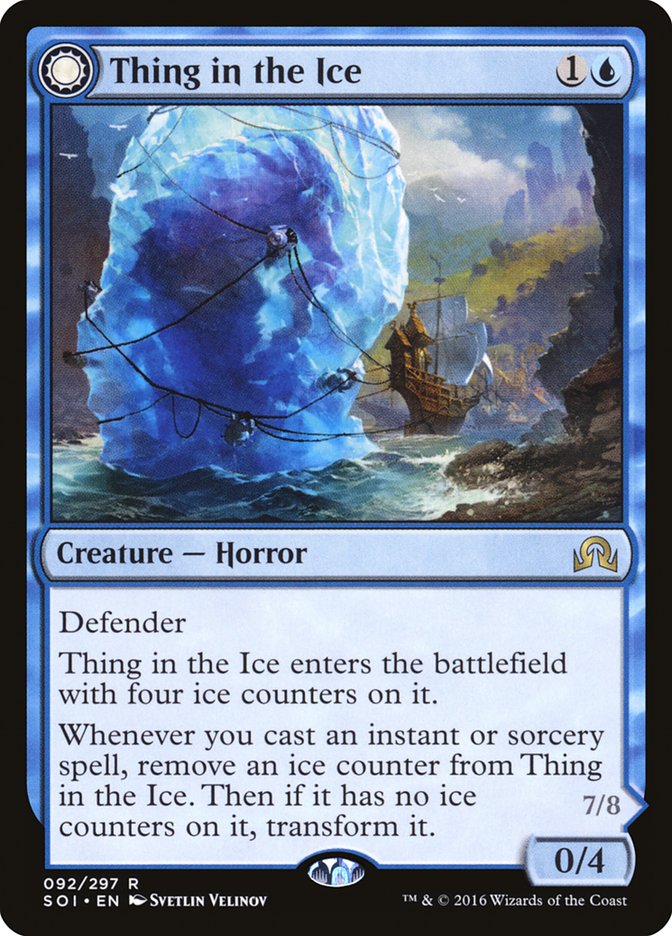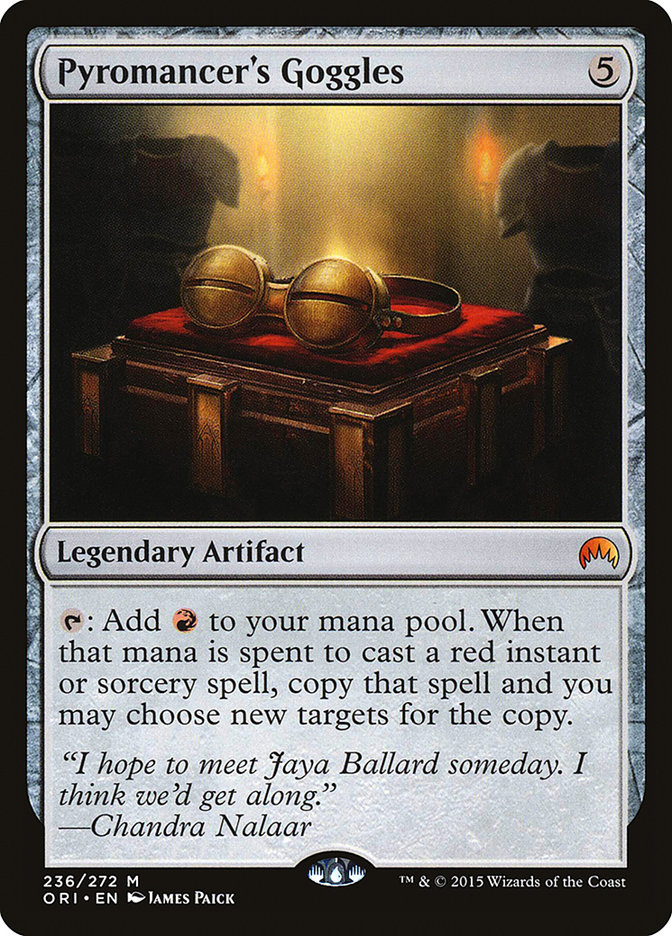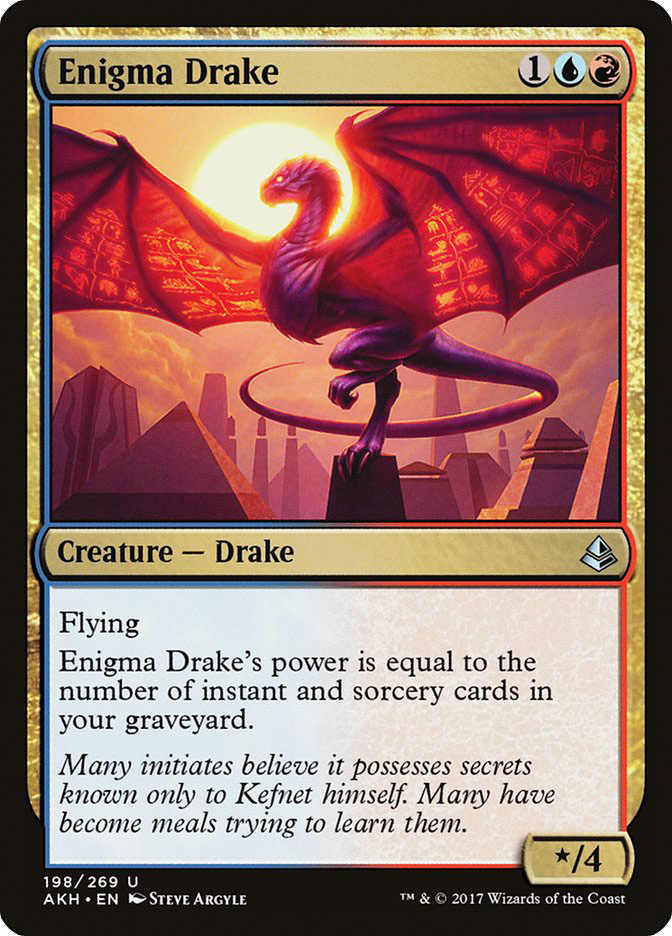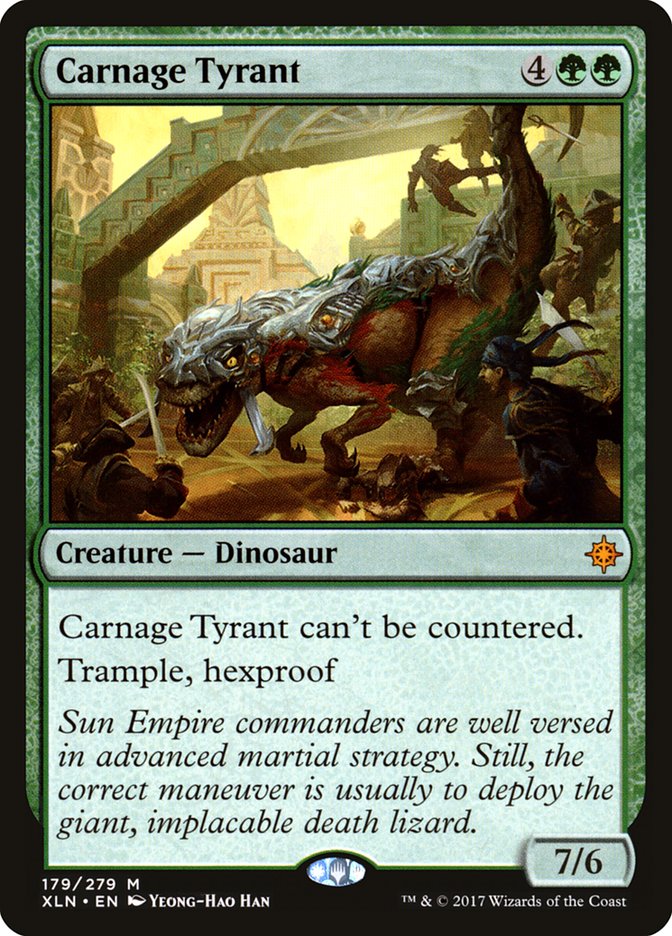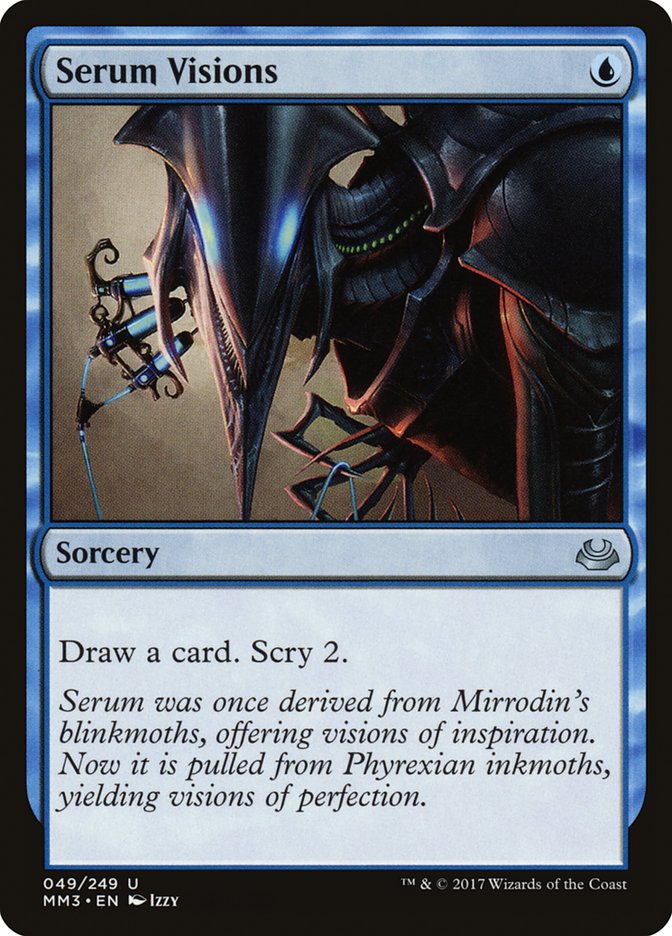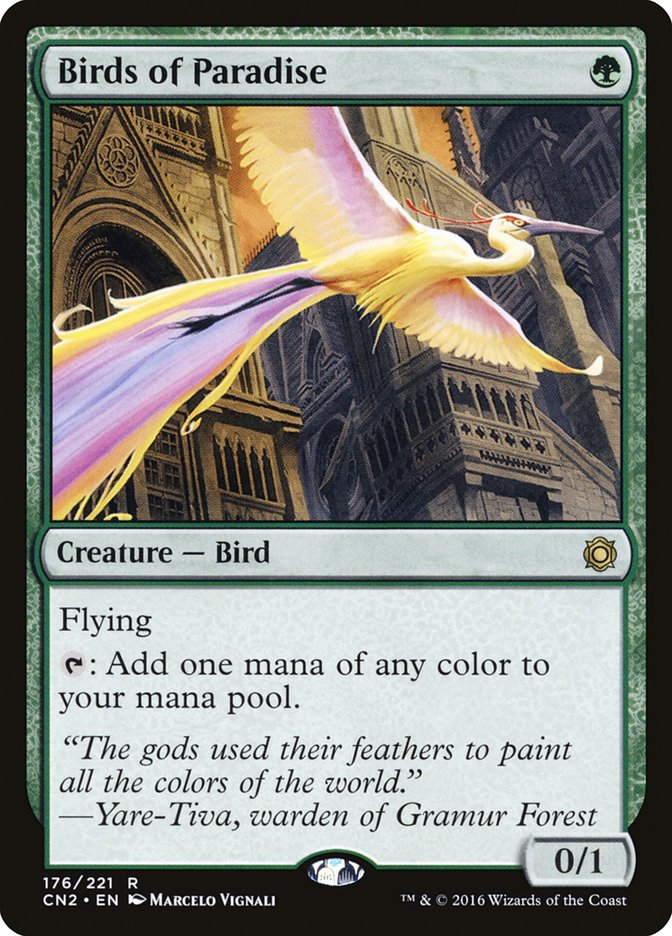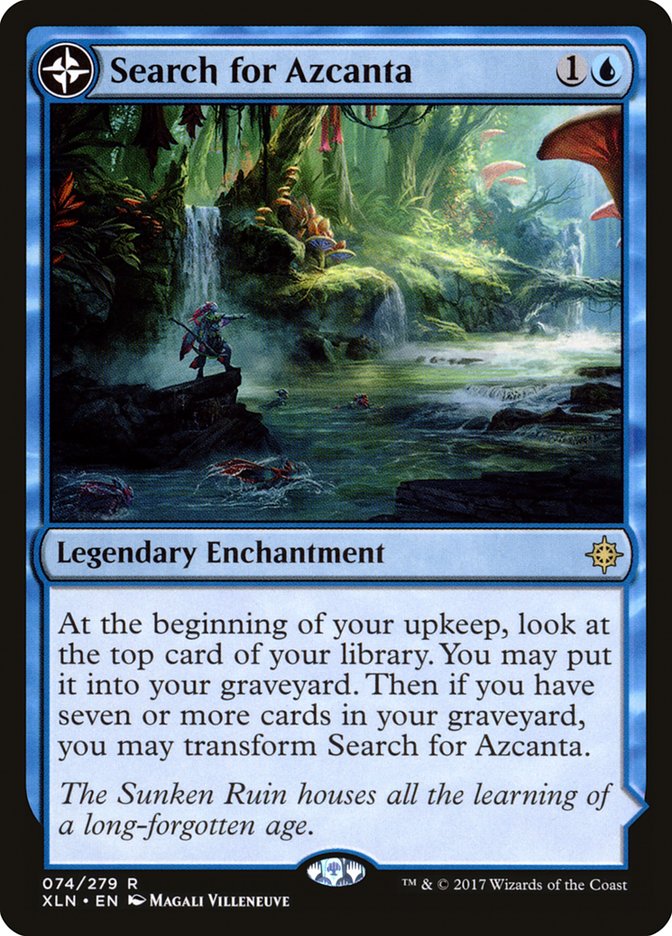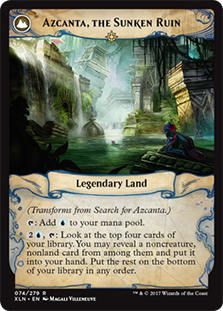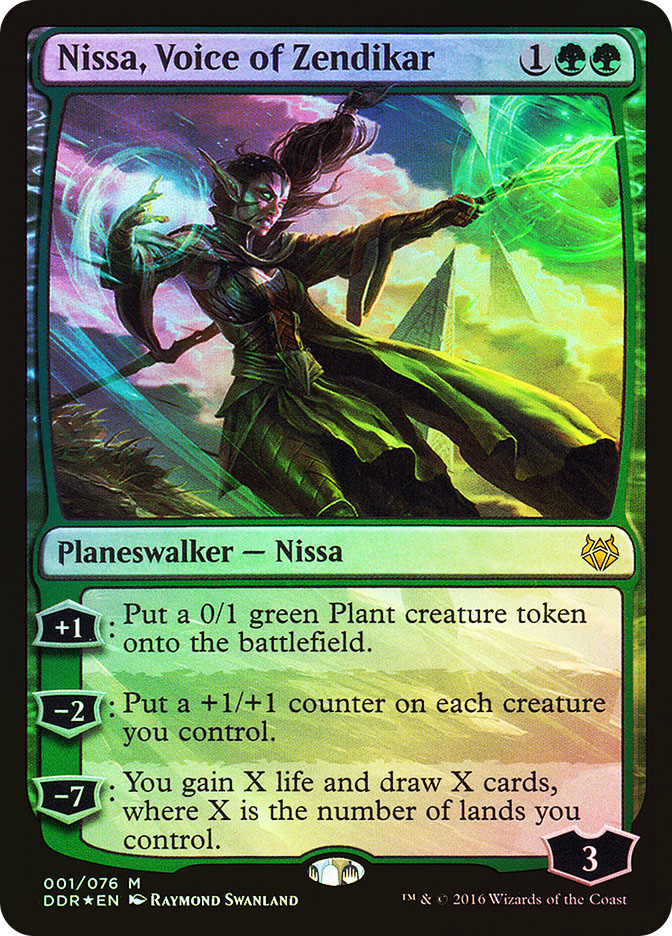Building a deck is arguably the most difficult aspect of Magic. Time and
time again, we find ourselves scouring the internet for various decklists
because we are unable to build one ourselves. Many in our community attack
those that “netdeck,” but few understand just how tough it can be to build
your own archetype. In fact, it is tough enough to just improve an existing
archetype, and most content creators spend days perfecting their “netdecks”
before a major tournament.
Suffice it to say that building a deck, in any form, is not an easy task.
Doing a copy/paste from the most recent event isn’t exactly difficult, but
evolving that deck for the expected metagame or just changing parts where
you find flaws is a noble venture. In evolving a deck, or building a new
one, there are many hurdles to overcome. Today we’re going to be going over
a few aspects of building a deck, how deckbuilding has changed in modern
times, and learn what we can do as deckbuilders to stay away from common
traps and misconceptions.
There are many pitfalls in deckbuilding that you should avoid. The most
common mistakes come from those who are closest to the archetypes
themselves, as they’re unable to see things from an outside perspective.
I’m guilty of doing this myself, as I tend to build new decks using old
ideas. Do you know how long I tried to make Thing in the Ice a competitive
deck long after Pyromancer’s Goggles rotated? Are you aware of how many
hours I put in to making an Enigma Drake deck?
With that said, it is important that we are explorers when it comes to
building new decks, and especially so when a format is fresh. After a
banning, or when a new set is released, or even after a rotation, there are
a plethora of options to consider. How does Gideon, Ally of Zendikar
rotating affect other cards that everyone forgot about? Will the loss of
Thraben Inspector/Selfless Spirit, etc. make Oketra’s Monument unplayable?
Does Bloodbraid Elf getting unbanned invalidate Mardu Pyromancer?
One thing you need to remember is that Magic has a long history of
repeating itself. While new cards can bring new decks, almost every
strategy has a skeleton from a previous era we can build around. While the
supporting cast might not be the same, the heart of the idea is there. We
just have to find it and figure out why that deck was good in the
first place. It isn’t enough to use an old decklist to build a new one; you
need to understand why the deck was good in the first place.
That’s why it is so important to consume Magic content: because the
relaying of the understanding of a thing-and learning to
understand it yourself–is much more important than having someone else
just tell you something simple.
Deckbuilding in Week One
When building a new deck from scratch, it’s important to understand exactly
why you’re building this deck in the first place. Are you trying to be
hyper aggressive? If so, why? Are you trying to exploit the slow speed of
the format? Are you capitalizing on people building their deck incorrectly?
Or do you just really like red cards?
All three of these answers are certainly fine reasons to build an
aggressive deck in a new format. And because of the first two reasons,
mono-colored aggressive strategies are often dominant in the first week
after a set has been released. People want to try out splashy new mythics,
even if they’re too slow to compete. People will try to play three or four
(and sometimes five) color decks, depending on the mana available, and will
stumble because their numbers are a little off. Meanwhile, all of your
lands enter the battlefield untapped, and you’re off to the races on the
first turn. By the time they’re set up and able to interact with you, your
Bomat Courier has already dealt five damage and hidden five cards to draw
when you’re ready to pop it.
If you’re going to build a midrange deck, my suggestion is to lean on the
simpler side of things. Unless your manabase is perfect, two-color decks
are the way to go. Or if a recent set release or rotation doesn’t change
your deck all that much, using an older template to build your new version
is more than acceptable. We saw a lot of this with Temur Energy, as it
didn’t change much from set to set.
Rotations tend to have the biggest impact on existing archetypes since an
entire year of cards rotate out all at once. That means we lose our lands.
We lose cards that are integral to our archetype. And in many instances,
decks disappear completely. That isn’t a bad thing, and especially so when
an archetype or card has been dominant throughout its entire two-year
stretch in Standard. And as a content creator for about a decade, I can say
that rotations are some of the most fun I have making content, because I
get to try out so many new things. But having a great starting point when
trying to build decks in an unexplored format makes things a lot easier.
You start to see trends when it comes to how Wizards of the Coast designs
cards. You notice that Planeswalkers important to the story are generally a
lot more powerful than they look on paper. You realize that the deck you’re
working on gets completely obliterated by those powerful cards. You scrap
it and start again with another idea. And, in some instances, you give up
on what you’re doing and listen to your friends (or content creators)
because you just can’t figure it out. And that’s okay!
Some people, like Michael Majors, are very good at coming up with new ideas
in a new format. He’s able to create amazing shells that wrap everything
together in a neat little bow. But he’s also pretty bad at perfecting the
surrounding cast. And that’s also okay! No one is perfect at building
decks. Every single new deck I’ve seen in the last decade has had at least
one flaw, and many of those decks evolve to become something else entirely.
Did you know that U/W Delver was originally U/W Illusions?
Creatures (20)
Lands (23)
Spells (17)
Sideboard

Creatures (16)
Lands (21)
Spells (23)

Funny how a deck can change over time and look virtually nothing like it
did originally. But that is exactly what is great about building decks (and
Magic). That’s why I will never fault someone for “netdecking.” Building
your own deck is difficult, and you should be proud when you actually
create something. There is no exact method for building decks. That’s why
there are so many articles written about the subject, but even though
there’s not an exact blueprint, we can try to learn what does and doesn’t
work through testing. Each card change is another variable. Each core card
to an archetype is the control. Building a new deck is an ever-changing
experiment.
Exceptions to the Rule
When myself or someone else, anyone has been around the block for a few
years, tells you that a card in your deck is bad, your first instinct
should not be to defend your card choice. Your first instinct should be to
listen to why we think that card is a bad fit. Then, after considering the
argument, you are more than welcome to tell us the reasons behind why you
chose to include that card in the first place.
More often than not, the reason we suggest cutting cards or changing cards
is because that one particular card doesn’t fit the curve. Most people who
play the game understand that “curving out” is an important aspect of the
game. Hitting bigger and bigger spells as you increase your land count is
important for matching your opponent. With that said, there is always an
exception to every rule.
Creatures (17)
- 4 Favored Hoplite
- 4 Hero of Iroas
- 2 Lagonna-Band Trailblazer
- 4 Seeker of the Way
- 2 Monastery Mentor
- 1 Hangarback Walker
Lands (22)
Spells (21)

The “curve” goes only as high as you need it to go in order to win the
game. Throughout Magic’s history, there have been countless decks that
didn’t really need to hit their fourth land drop. In fact, there are decks
across all formats that lowered their land count significantly in order to
prevent drawing too many lands. And while having so few lands will
occasionally lead to mulligans, you will usually more than make up ground
when you stop playing lands after the third.
In Standard, the “curve” is more pronounced because the overall power level
of cards is lower. That means you can’t usually fill your deck with only
cheap spells and hope to win the game. The density of cards that fit any
given casting cost is lower, so it only makes sense that you would have
fewer great cards at each individual converted mana cost. Working on your
curve in Standard is one of the coolest things about building a deck,
because it’s so hard to quantify that you just figure it out over time. And
often, that’s the only way you’re going to figure out how to build the
curve of your deck.
In some formats, it is important to have a higher curve because the other
decks in the format are slow. Sideboards will often have “big finishers”
that might not be fast enough to see play in your maindeck but are more
than capable of closing games against the colossally slow control beasts.
In other formats, like Legacy, playing a high curve often leaves you dead
before the match begins. Unless your big spells are game-ending and you
have enough ways to interact with your opponent in the early turns, playing
spells that cost more than four mana is essentially unheard of. But again,
there are exceptions to this rule.
So if we can agree that everything in deckbuilding is contextual, we can
also agree that no one person is going to be right or wrong 100% of the
time. Your ideas have merit. Your decks are awesome and creative and
beautiful at the same time because you made them. Just because a child
draws a picture doesn’t mean it’s “bad.” They just haven’t developed the
skills to be an artist worthy of worldwide praise. And if they want to be
an artist when they grow up, you can help them figure out things like
technique or negative space or whatever and introduce them to all sorts of
people who could help them get better at the craft.
One Specific Example
Let me show you something.
Sunday Funday Stream is still rolling along with Sultai
Walkers!https://t.co/FxWmhQePHh pic.twitter.com/rC9c05GFBr—
Todd Stevens (@ToddStevensMTG) February
25, 2018
This is an example of a “bad deck,” though a lot of the ideas have merit. I
had a very brief argument via Twitter with Mr. Stevens about this deck, and
why it was bad. I promised him that I’d spend this entire article
explaining why this deck is bad, but instead he’ll have to settle for a few
hundred words. Let’s begin.
Serum Visions is a card that pairs well with Snapcaster Mage or helps you
dig for very specific cards that your deck may or may not be able to win
without. It helps you hit land drops and allows you to smooth out your
draws in the early turns. Cards like Serum Visions should not be played
alongside decks with mana accelerators.
When you put a Birds of Paradise in your deck, you’re effectively telling
the world that you would like to play a spell that says “G: This is a land.
Please don’t kill it.” Your entire goal is to accelerate into bigger
threats, or to make sure you can get a significant mana advantage on your
opponent. In decks that play Birds of Paradise, you want most of your
advantages to come from bigger spells (makes sense, right?). In this
regard, playing Birds of Paradise with powerful three- and four-drops like
Liliana of the Veil and Jace, the Mind Sculptor makes a little more sense.
But there are exceptions to this rule when a card of higher power level
sits at a cheaper casting cost than average. For example, Bant Eldrazi
played both Noble Hierarch and Ancient Stirrings. In a lot of ways, Ancient
Stirrings functions like Serum Visions, but they are not the same card and
don’t belong in the same types of decks. Serum Visions tends to be better
in decks that have an overall cheap casting cost. You want to play fewer
lands and you want to make sure you don’t draw too many (or can keep a hand
with just one or two). Cards like Serum Visions allow you to “cheat” on the
number of lands you play in your deck because casting it early nearly
guarantees you’ll find another land in the top four cards.
Decks that feature Birds of Paradise typically want a reasonably high
number of lands, or virtual lands, because they are trying to power out
bigger spells at an accelerated rate. Or, at the very least, they’re trying
to play their three- or four-drop one turn earlier. And when that spell is
insanely powerful, like Collected Company or Knight of the Reliquary, it is
easy to justify playing a card as inherently “weak” as Birds of Paradise.
Again, there are exceptions to this rule, but seeing a deck featuring both
Birds of Paradise and Serum Visions really threw me off.
As an aside, I want to say that cards like Serum Visions don’t really pair
well with Liliana of the Veil. Cards that replace themselves often leave
you with too many cards in hand when you start using the +1 for discard.
And if you can’t empty your hand, you leave a lot of value on the table.
That’s why you so rarely see Liliana of the Veil paired with Snapcaster
Mage. Your goal with Liliana of the Veil should be to trade as many
resources as possible before you cast it; that way you can attack your
opponent’s hand without dealing too much damage to yourself.
I would never recommend playing a deck with Search for Azcanta that had so
few instant-speed cards and so many creatures. The best part about
activating an Azcanta, the Sunken Ruin is that it should consistently hit.
When you have 32 misses, you’re investing a lot of time and effort into
disappointment.
Azcanta, the Sunken Ruin is also much better when you have spells that can
be played in the later turns of the game. Hitting something like
Inquisition of Kozilek with Azcanta, the Sunken Ruin is about as mediocre
as it gets. With that said, you also want cheaper spells in your deck with
Azcanta, the Sunken Ruin so that you can actually leverage that card
advantage. Modern is chock full of cheap, powerful spells that we can use
alongside Azcanta, the Sunken Ruin, so why are we playing a ton of three-
and four-drop spells with it?
And where are the Thought Scours? Why isn’t Birds of Paradise something
like Explore? What is the point of this deck? Synergy is a big part of
Magic, and if you aren’t doing your best to pair cards that work well
together, you’re going to find yourself with a bunch of awkward spells that
don’t mesh.
Why?
Mr. Stevens’ response to my criticisms of his deck was that he was “just
playing a fun deck.” Well, sir, I have to say that cards like Jace, the
Mind Sculptor and Liliana of the Veil aren’t exactly “fun” in my book. This
statement actually got under my skin quite a bit, because this deck is
about ten or twelve cards from being competitive in Modern. In fact,
someone else posted a similar deck on the same day that I actually think
might be awesome.
Ran it back and top 8’d the @F2FToronto
1k showdown with @KeithCapstick‘s
BUG list. Felt I got a bit unfortunate to lose my match and the deck still
felt very good, This deck seems like a great choice if you want to play a
proactive Jace deck. Here’s the list for those who asked: pic.twitter.com/DOMOYWNp6y—
Edgar Magalhaes (@EdgarMTG) February
26, 2018
While still potentially flawed, the idea here is much more refined. Cards
like Dark Confidant pair nicely with the discard effects to protect it. And
if you compare these two decks side-by-side, they are almost identical.
They share the same skeleton. The two creators of the two decks just took
them in a different direction.
Mr. Stevens’ deck is not a “bad” deck. There is such a thing as a “bad”
deck that is built well. There is also such a thing as a good deck built
poorly. Mr. Stevens’ deck was the latter because it was not the best
possible version of the deck it could be. And instead of recognizing that
his deck was bad and trying to fix it, he doubled down by saying it was
just a “fun deck.”
This is something I hear far too often when people ask me for critique (not
that Mr. Stevens did). A deck can be fun and competitive. A deck can be bad
and you can love it anyway. I’m here to show you a better way of building
your decks. And if you legitimately want help, then I’m here to give it.
But I will not coddle you. I will not sugarcoat it. And above all else, I’m
not going to lie to you. And if you’re good with all of that, then we’ll
get along just fine.


